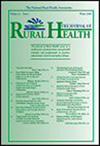The impact of California Proposition 56 on smoking behaviors across geographic residence
Abstract
Purpose
To explore the geographic impact of California's Proposition 56 (Prop 56) on smoking behaviors.
Methods
We identified 61,193 respondents aged 21+ from the 2012–2018 California Behavioral Risk Factor Surveillance Survey. We constructed county identifiers indicating whether (1) a respondent lived in an urban, suburban, or rural county and (2) whether a respondent lived in a metropolitan statistical area (MSA) or not. Similarly, we created a binary variable indicating whether Prop 56 was in effect (Yes/No). We used a two-part model to estimate the association of Prop 56 with smoking participation among all adults and smoking intensity (average number of cigarettes smoked per day (CPD)) among current smokers. Models were run separately for each geographic subgroup. Additional covariates included sociodemographic characteristics and a time trend variable.
Findings
Smoking prevalence was significantly different across geographic groups, with rates highest among the rural population group (13.8%) and lowest among the urban subgroup (9.1%). Similarly, rates of smoking intensity were significantly higher among non-urban populations, with average CPD highest among the rural population (10.66) and lowest among the urban subgroup (8.32). Regression models highlighted a negative association between Prop 56 and smoking participation only among the urban and MSA subgroups (p < 0.001). We found no evidence of an association between the enactment of Prop 56 with average CPD for any geographic group.
Conclusion
Public health experts, clinicians, and policymakers might consider additional interventions that can be implemented in tandem with pricing tools to help reduce observed geographic disparities in smoking among rural—and even suburban—communities.

 求助内容:
求助内容: 应助结果提醒方式:
应助结果提醒方式:


